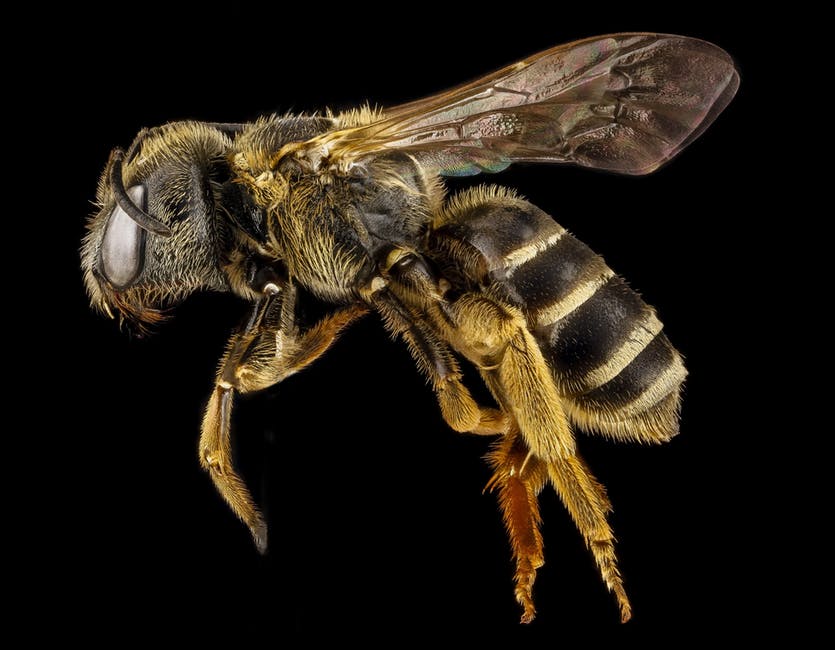Survive a “killer bee” attack

A “killer bee” is NOT a giant bee with big teeth, a 10-feet long sting and armed with an axe. A “killer bee” is a hybrid of the Western honey bee species, produced by the crossbreeding of the African honey bee and European honey bee. The name of the “killer bee” is the Africanized bee or Africanized honey bee. It was first bred in Brazil in the 1950s with the purpose of increasing honey production. Unfortunately, things got out of control in 1957 and a few swarms escaped quarantine, eventually spreading throughout South America. In 1985, the Africanized honey bee arrived in North America and started conquering the new territory. In 1990, “killer bee” hives were found in Texas.
Africanized bees are more sensitive and react faster than any other bee species. If disturbed, “killer bees” have been known to chase the culprit up to half a mile. The statistics show that they have killed over 1000 people and when they attack, their victim gets stung on average ten times more than when a European honey bee gets angry.

The venom of the Africanized bee is the same as in other bee species, but they’re called killer bees because of the number of stings the victim receives. The average number of deaths caused by Africanized honey bee stings is 1 or 2 per year, so it’s not like the bees are chasing people around looking for human victims like they do in the low-budget films.
If their hive is not disturbed, they won’t do a thing. But if your ways cross for some reason, get ready for the attack as these guys are way more aggressive than the other bee species and they defend themselves vigorously. So, if you don’t want to suffer, don’t mess with them. But if you run into some angry “killer bees” and you get stung, here are some useful tips that might save your life.
First of all, if you hear them buzzing, run and don’t stop until you find shelter. Maybe some will follow you inside, but you can win the fight with just a few of them. Pull a shirt or whatever you’re wearing over your head to protect your eyes and the most sensitive parts. Your visibility will be weak, and you won’t be able to see where you’re going, but at least your face will be safe. If you are trapped or unable to move, use a blanket, a sleeping bag, a tarp, or whatever you can find around and cover yourself. Cover as much of your body as you can and if there are kids with you, cover them first.

If there’s a river, lake or a pond near, DO NOT jump into it. Water is not a good hiding place because you can’t stay underwater for too long. The first moment you put your head above the surface an army of “killer bees” will land on your face and hurt you badly. Also, be sure not to wave your arms at the bees or crush one if you don’t want the rest of the hive chasing you around to revenge the relative.
If you get stung, don’t pull out the stingers with your fingers, scrape them with a fingernail, a butter knife, a credit card or any other similar object. If you pull out a stinger, it will release more venom into the wound which will increase your problems. Call 911 immediately if you or someone else is in danger. Ask for medical help right away if you’ve been stung more than 15 times and you feel nausea, headache, dizziness, or any other symptoms.

“Killer bees” attacks are rare, but they are easily irritated, so don’t disturb them! Ever!
If you have any comments then please drop us a message on our Outdoor Revival Facebook page
If you have a good story to tell or blog let us know about it on our FB page, we’re also happy for article or review submissions, we’d love to hear from you.
We live in a beautiful world, get out there and enjoy it. Outdoor Revival – Reconnecting us all with the Outdoors.
